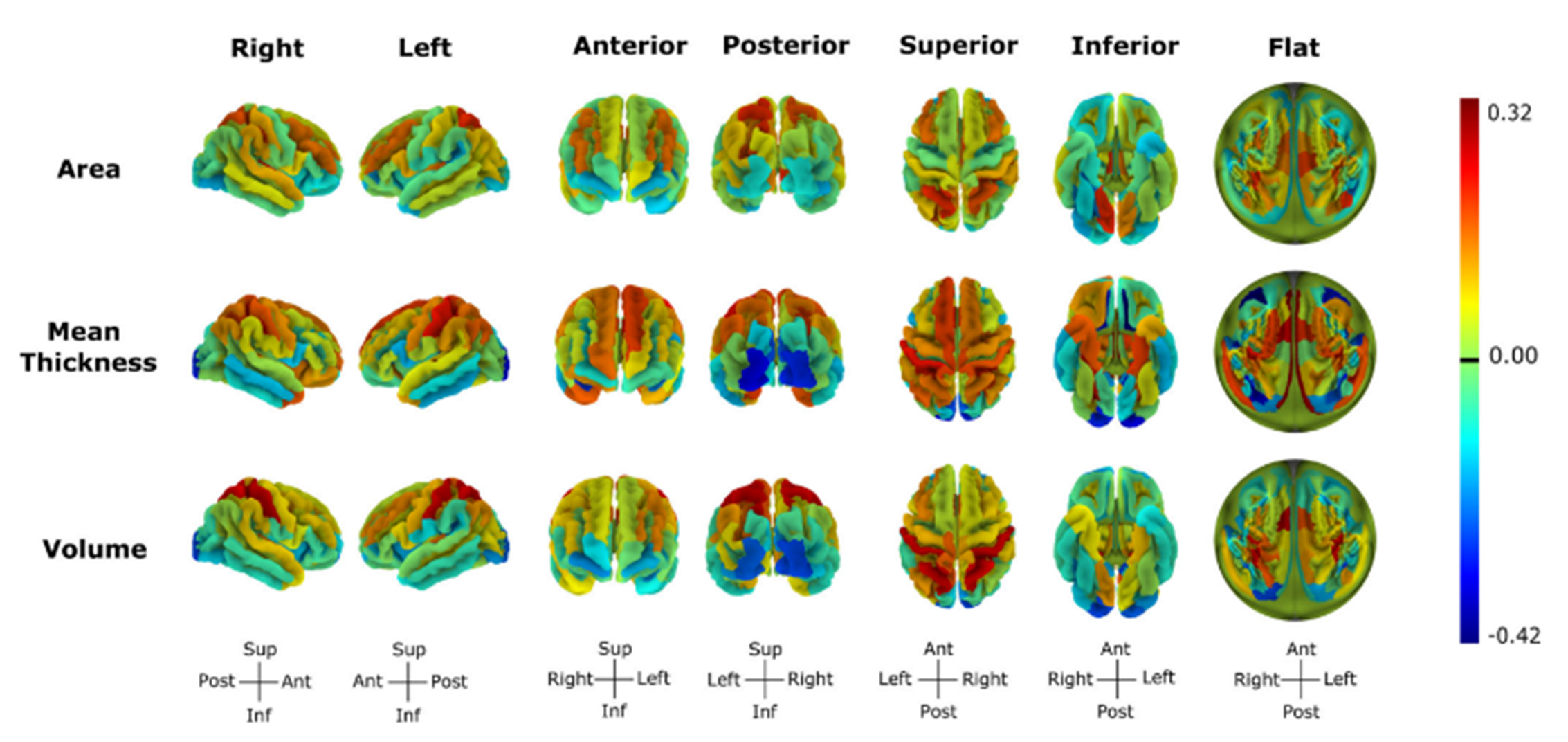The pursuit to unravel the mysteries of the human brain has taken scientists along different avenues, with one of the most intriguing being the investigation of gender disparities in brain structure. This exploration, far from a pursuit of mere academic curiosity, holds the key to understanding the nuanced ways in which our brains govern our behaviors, health risks, and even our responses to treatment. A groundbreaking study spearheaded by Drs. Siyuan Liu and Armin Raznahan at NIH’s National Institute of Mental Health (NIMH) has provided unprecedented insights into this domain. By analyzing over 2,000 brain scans from two independent databanks, the Human Connectome Project and the UK Biobank, the team has revealed sex differences in the volume of certain regions in the human brain that have profound implications for our understanding of brain disease and behavior.
About The Reserch
The findings from this large-scale analysis indicate that, on average, males and females exhibit greater volume in different areas of the cortex – the brain’s outer layer that controls thinking and voluntary movements. For instance, females display greater volume in regions like the prefrontal cortex, orbitofrontal cortex, superior temporal cortex, lateral parietal cortex, and insula. These areas are critical for a variety of cognitive functions, including decision making, emotional regulation, and language processing. On the other hand, males tend to have greater volume in the ventral temporal and occipital regions, which play a pivotal role in visual processing and object recognition. This divergence in brain morphology not only underscores the biological underpinnings of sex differences but also aligns with observed behavioral and cognitive differences between the sexes.
Further illuminating this complex picture, the study cross-referenced anatomical findings with publicly available maps of gene expression in the brain, based on over 1,300 postmortem tissue samples. The correlation between the spatial patterns of sex differences in cortical volume and sex-chromosome gene expression is particularly striking. Regions with relatively high expression of sex-chromosome genes tend to have greater cortical volume in males than females, suggesting a genetic component to these anatomical differences. This intersection of genetics and neuroanatomy opens new avenues for understanding how sex chromosomes, beyond their role in determining sexual characteristics, influence the structural development of the brain.
In addition to anatomical and genetic correlations, the research team made another compelling connection by comparing their findings with data from more than 11,000 functional neuroimaging studies. These studies, which examine brain activation during specific activities or conditions, revealed that anatomical differences are associated with disparities in cognitive tasks. For example, visual object recognition and face processing—two tasks where sex differences have been consistently observed—are linked to the anatomical distinctions uncovered in the study. This association between brain structure and function adds another layer to our understanding of how sex differences manifest in cognition and behavior.
Main Findings
The implications of such research are vast and profound. According to Dr. Raznahan, “Developing a clearer understanding of sex differences in human brain organization has great importance for how we think about well-established sex differences in cognition, behavior, and risk for psychiatric illness.” This sentiment echoes the broader scientific community’s growing recognition of the need to consider sex as a critical variable in neuroscience and medicine. By shedding light on the anatomical bases of sex differences, studies like this one not only advance our scientific knowledge but also pave the way for more personalized approaches to treatment and intervention.
As we venture further into this intriguing landscape, it becomes increasingly clear that the journey is as significant as the destination. The study of sex differences in brain morphology not only challenges our preconceptions but also invites us to reimagine our approaches to health, education, and society at large. In a world where individual differences are often celebrated, understanding the biological roots of these differences is a crucial step towards embracing diversity, promoting equity, and optimizing outcomes for all.

Venturing into the realm of brain morphology and its implications on cognition, behavior, and disease illuminates a fascinating intersection of biology and psychology. The discovery by Drs. Siyuan Liu and Armin Raznahan that sex can influence the volume of specific brain regions opens a window into understanding the biological roots of distinct cognitive abilities, behavioral tendencies, and disease vulnerabilities associated with each sex. This crucial insight offers not only a clearer picture of the human brain’s intricate design but also a pathway to tailoring more effective, personalized approaches to healthcare and education.
Considering cognitive abilities, the research highlighted a link between brain volume differences and performance in specific cognitive tasks, such as visual object recognition and face processing. These findings resonate with the broader literature, suggesting that the physical structure of our brains could underpin the sex differences observed in certain cognitive skills. This insight challenges the traditional view that such differences are primarily the result of socialization, pointing instead to a more complex interplay of biology and experience.
In the sphere of behavior, the variance in brain volume between sexes offers a tantalizing clue to the perennial question of why men and women often exhibit different behavioral patterns. For example, studies have shown that women generally excel in tasks requiring verbal ability and social cognition, which correlates with their greater volume in areas linked to language processing and emotional regulation. Conversely, the larger volume in men’s occipital regions could underlie their enhanced spatial skills. This perspective does not diminish the role of environmental factors in shaping behavior but underscores the biological contributions that warrant further exploration.
The disparities in brain morphology also shed light on the sex-based differences in susceptibility to certain diseases. Understanding that males and females have greater volumes in different brain regions provides a valuable context for examining why some conditions, such as depression and autism spectrum disorder, have a higher prevalence in one sex over the other. This knowledge could revolutionize the approach to prevention, diagnosis, and treatment of various neurological and psychiatric conditions, moving towards interventions that account for the unique aspects of male and female brain architecture.
Furthermore, the genetic aspect of these findings cannot be overlooked. The correlation between sex differences in cortical volume and sex-chromosome gene expression hints at a genetic blueprint influencing brain development. This raises intriguing questions about how these genetic factors interact with environmental influences throughout life to shape the brain’s structure and function.
As we bridge the gap between brain morphology and its impacts, it becomes clear that these insights have profound implications for society. In education, for instance, understanding the biological underpinnings of cognitive and behavioral differences can guide the development of teaching strategies that accommodate and nurture diverse learning styles. In healthcare, a deeper appreciation of sex-based vulnerabilities could lead to more nuanced, effective treatments for mental health conditions and neurological diseases.
Exploring sex differences in brain morphology is not only an academic pursuit but also a journey to unlock the full potential of each individual. By embracing the complexity of the human brain, we open up new possibilities for enhancing well-being, enriching education, and advancing healthcare. This journey, fueled by curiosity and guided by scientific discovery, promises to reshape our understanding of what it means to be human in the most inclusive and empowering ways.
Related posts:
Sex differences in brain anatomy
How men’s and women’s brains are different





